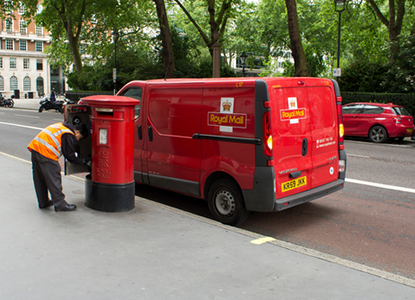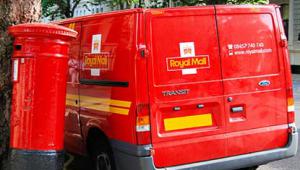By Richard Johnstone | 1 April 2014
Taxpayers lost out after the government set an overly cautious share price for the privatisation of Royal Mail in order to ensure the sale went ahead, the National Audit Office has said.

In an examination of the sell-off, auditors found the government’s primary objective of floating the firm had been reached, but better value for money could have been achieved.
The privatisation of Royal Mail report found the Department for Business, Innovation and Skills had set the share price conservatively to ensure the sale was completed, but lost out when shares subsequently rose substantially in initial trading.
Royal Mail shares were offered at 330 pence – the highest level possible under the prospectus – raising £2bn for the Treasury. But they closed at 455 pence in their first day of trading, a 38% increase in value and worth £750m to the new owners. Five months later, the shares were worth 72% more than the offer price.
Auditor general Amyas Morse said the pricing approach had hit the return to government.
‘The department was very keen to achieve its objective of selling Royal Mail, and was successful in getting the company listed on the FTSE 100.
‘Its approach, however, was marked by deep caution, the price of which was borne by the taxpayer.’
Public Accounts Committee chair Margaret Hodge said it was clear the department had ‘undersold the taxpayer when it privatised Royal Mail’.
She added: ‘The private advisers recommended not increasing the selling price before the first day of trading. With the sale 24 times over-subscribed this proved to be bad advice, with investors not taxpayers benefiting.
‘The fact the share price has increased by 72% since the department sold the taxpayers’ share tells me the department had no clue what it was doing.’
Examining the process of the sale, auditors found that demand for Royal Mail stock was 24 times the maximum number available to institutional investors.
However, DBIS did not know the level of interest above the high end of the range it had set. As it was unclear whether there was sufficient demand at higher prices, the department concluded the risks of increasing the price were too great, and went ahead with the offer at 330 pence.
Because the government retained 30% ownership of the firm, it has benefited from the price increase, auditors added. However, it could also have decided not to sell the full 60% of the firm it stated was available. Had the option been taken to retain 110 million shares – worth £363m at the offer price – it would have further benefited from the rise in value while also meeting the objective to reduce state ownership to below half.
Morse said: ‘The government retained 30% of the company. It could have retained even more and allowed the taxpayer to participate further in the rapidly increasing share price and thus limit the cost of to the taxpayer of its cautious approach.’
Responding to the report, shadow business secretary Chuka Umunna said the NAO had delivered a damning verdict on what he called a ‘botched fire sale’.
He went on: ‘We now know definitively that far better value for taxpayers could have been possible had ministers adopted a different timetable for the sale.
‘When Royal Mail was privatised, [Business Secretary] Vince Cable described the huge rise in its share price as “froth”, but since then it has continued to rise. He and [Prime Minister] David Cameron have serious questions to answer on the hundreds of millions of pounds they have lost British taxpayers and cannot duck responsibility for what has happened.’
However, Cable said that the government had secured the future of the universal postal service through the successful sale of a majority stake in Royal Mail, predominantly to responsible long-term investors.
‘Achieving the highest price possible at any cost and whatever the risk was never the aim of the sale,’ he noted.
‘The report concludes there was a real risk of a failed sale attached to pushing the price too high. And a failed sale would have been the worst outcome for taxpayers and jeopardised the operation of Royal Mail going forward.’





















